Unit Test (Solutions): Exploring Forces | Science Curiosity Class 8 - New NCERT PDF Download
Time: 1 hour
M.M. 30
Attempt all questions.
- Question numbers 1 to 5 carry 1 mark each.
- Question numbers 6 to 8 carry 2 marks each.
- Question numbers 9 to 11 carry 3 marks each.
- Question numbers 12 & 13 carry 5 marks each.
Q1: The SI unit of force is (1 Mark)
(i) kg
(ii) m/s
(iii) newton
(iv) joule
Ans: (iii)
The SI unit of force is the newton (N), named after Sir Isaac Newton. One newton is the force that gives a 1 kg mass an acceleration of 1 m/s².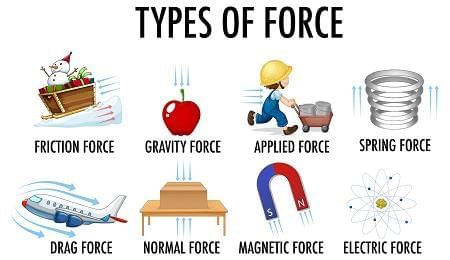
Q2: Which of the following is a non-contact force? (1 Mark)
(i) Friction
(ii) Muscular force
(iii) Magnetic force
(iv) Push of a door
Ans: (iii)
Magnetic force acts without physical contact; it can attract or repel magnetic materials from a distance.
Q3: Friction always acts (1 Mark)
(i) in the direction of motion
(ii) opposite to the direction of motion
(iii) at right angles to motion
(iv) randomly
Ans: (ii)
Friction opposes relative motion between two surfaces in contact, acting in the opposite direction of motion or intended motion.
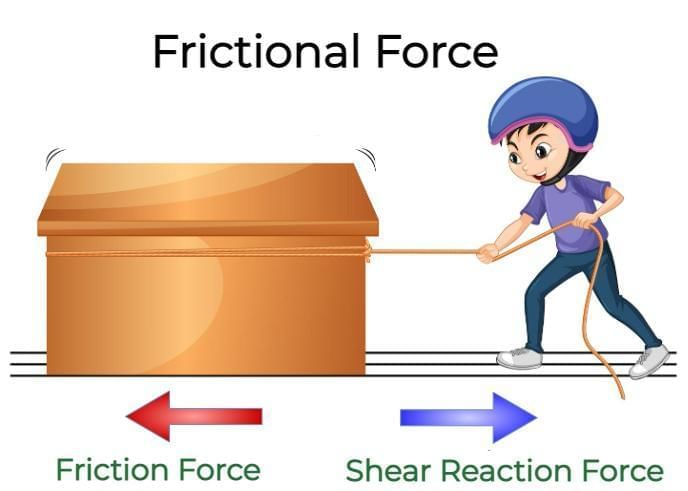
Q4: If a charged balloon repels another charged balloon, it means (1 Mark)
(i) they have similar charges
(ii) they have opposite charges
(iii) one is neutral
(iv) both are uncharged
Ans: (i)
Like charges repel; repulsion between both balloons means they carry similar type of charge (both positive or both negative).
Q5: The upward force exerted by a liquid on a submerged object is called (1 Mark)
(i) weight
(ii) buoyant force
(iii) friction
(iv) tension
Ans: (ii)
The upthrust or buoyant force is the upward force exerted by a fluid on an object immersed in it, discovered by Archimedes.
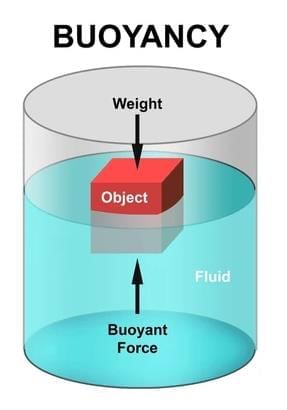
Q6: State any two effects that a force can have on an object. (2 Marks)
Ans:
(i) It can change the speed of an object — e.g., applying brakes slows a bicycle.
(ii) It can change the shape of an object — e.g., pressing a sponge deforms it.
Q7: Differentiate between contact and non-contact forces with one example each. (2 Marks)
Ans:
- Contact force: Requires physical contact between objects. Example: Friction between tyre and road.
- Non-contact force: Acts without physical contact. Example: Gravitational pull of the Earth.
Q8: Why is it easier to slide an object on a smooth surface than on a rough surface? (2 Marks)
Ans: On a smooth surface, microscopic irregularities are less, so interlocking between surfaces is minimal → lower friction. Rough surfaces have more irregularities, more interlocking, hence more friction.
Q9: Name the three non-contact forces explained in this chapter and state one characteristic of each. (3 Marks)
Ans:
(i) Magnetic force — can be attractive or repulsive; acts between magnets/magnetic materials without contact.
(ii) Electrostatic force — force between charged bodies; like charges repel, unlike charges attract.
(iii) Gravitational force — always attractive; acts between all masses, e.g., Earth pulling objects downwards.
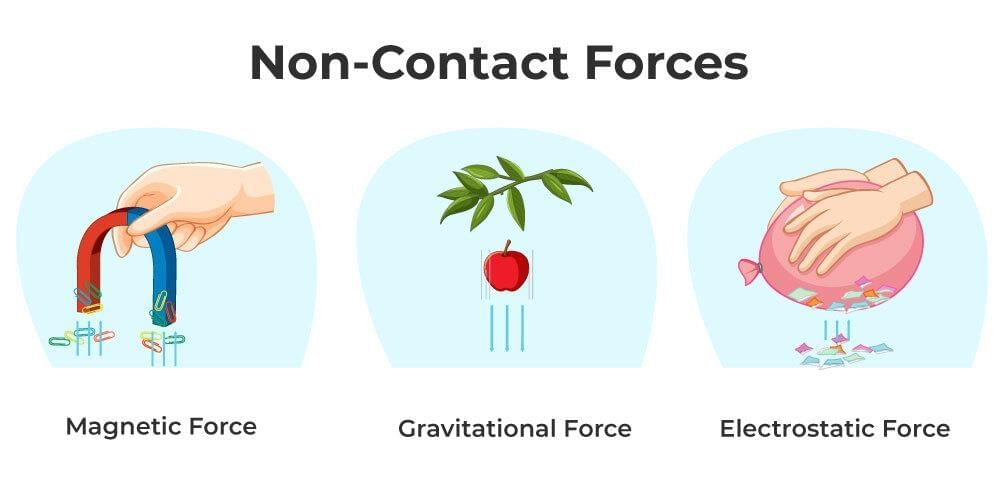
Q10: What is buoyant force? State two factors that determine whether an object floats or sinks in a liquid. (3 Marks)
Ans: Buoyant force is the upward force exerted by a liquid (or gas) on an object that is partially or completely immersed in it. This force acts opposite to gravity and makes objects seem lighter in a fluid.
An object will float if:
The buoyant force is equal to or greater than its weight.
The density of the object is less than the density of the liquid.
It will sink if its weight is greater than the buoyant force, or if its density is higher than that of the liquid.
Q11: State the difference between mass and weight. (3 Marks)
Ans: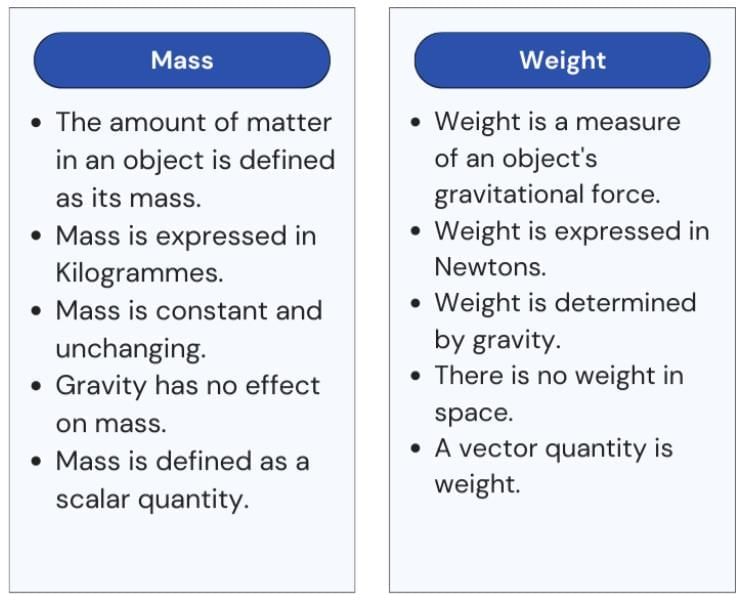
Q12: Discuss friction as both a necessity and a problem. (5 Marks)
Ans:
Friction is necessary because:
(i) It enables us to walk without slipping.
(ii) Allows vehicles to grip roads and stop when brakes are applied.
(iii) Enables holding objects and writing on paper.
Friction is a problem because:
(i) Causes wear and tear of moving parts.
(ii) Wastes energy as heat and sound.
(iii) Reduces efficiency of machines.
Thus, in practice we reduce unwanted friction (with lubricants, polished surfaces) but keep useful friction.
Q13: A ball is thrown vertically upwards. Describe the forces acting on it during: (i) upward motion, (ii) downward motion, (iii) at the topmost point. (5 Marks)
Ans:
(i) Upward motion — Gravity acts downward, opposing motion; slows the ball until velocity reaches zero.
(ii) Downward motion — Gravity acts downward, accelerating the ball towards the ground.
(iii) Topmost point — Instantaneous velocity is zero, but gravity still acts downward, initiating downward motion.
|
59 videos|235 docs|13 tests
|
FAQs on Unit Test (Solutions): Exploring Forces - Science Curiosity Class 8 - New NCERT
| 1. What are the types of forces commonly studied in Class 8? |  |
| 2. How does frictional force affect motion? |  |
| 3. What is Newton's First Law of Motion, and how does it relate to forces? |  |
| 4. Can you explain the concept of balanced and unbalanced forces? |  |
| 5. What role do contact and non-contact forces play in everyday life? |  |
















